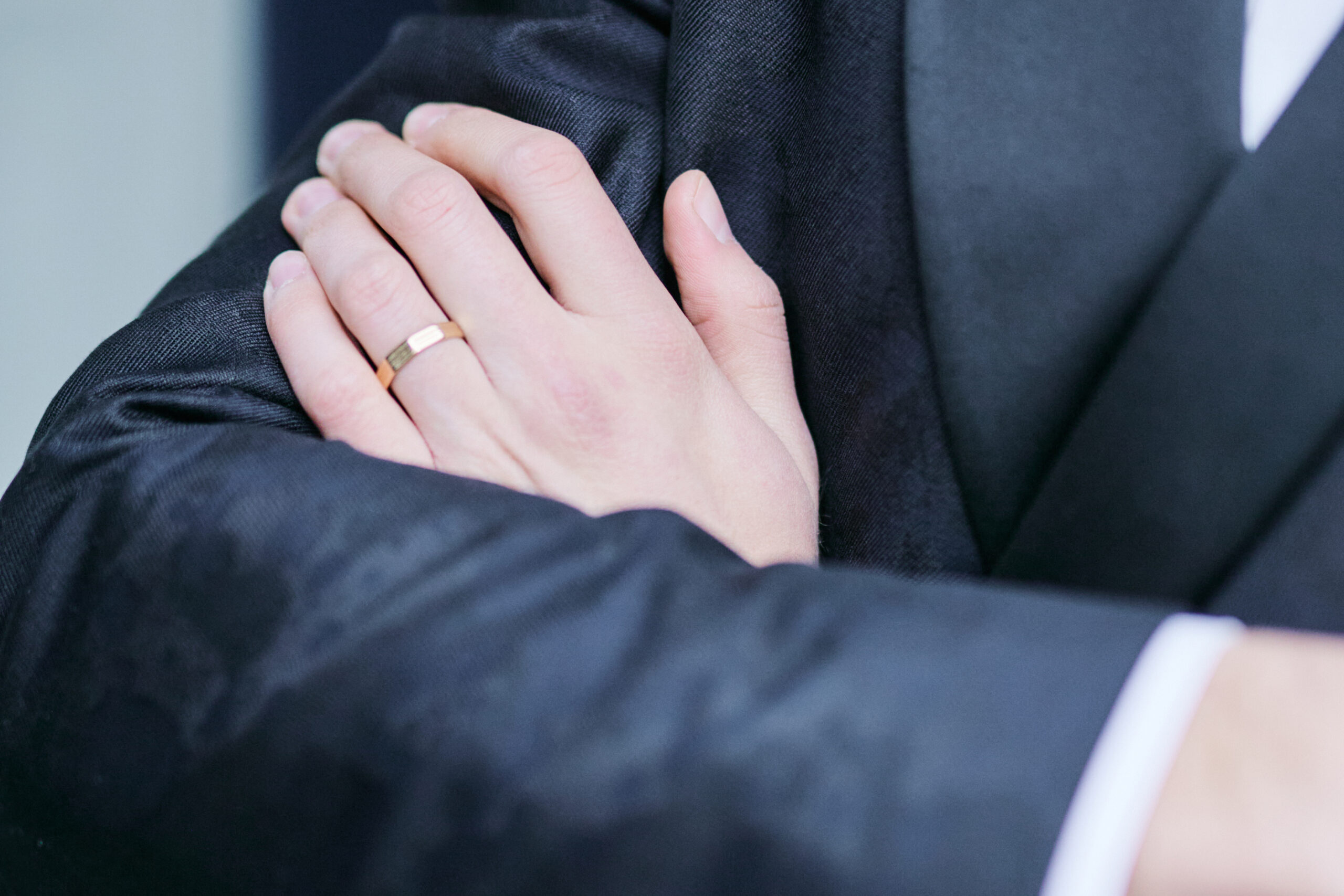
The antique ring is a sign of wealth and social status. It is worn for many reasons: to seal documents, to adorn oneself, as a token of love, as a diplomatic symbol, as evidence of religious faith, as a lucky charm, or as a symbol of belonging to a family, a party, or a community.
We talk about men’s rings because throughout history it was men who held the reins of power. Jewelry such as the cameo ring, the signet ring, the signet ring, and the signet ring have remained, in the collective imagination, rings for men, even though they are also worn by women.
Ring history
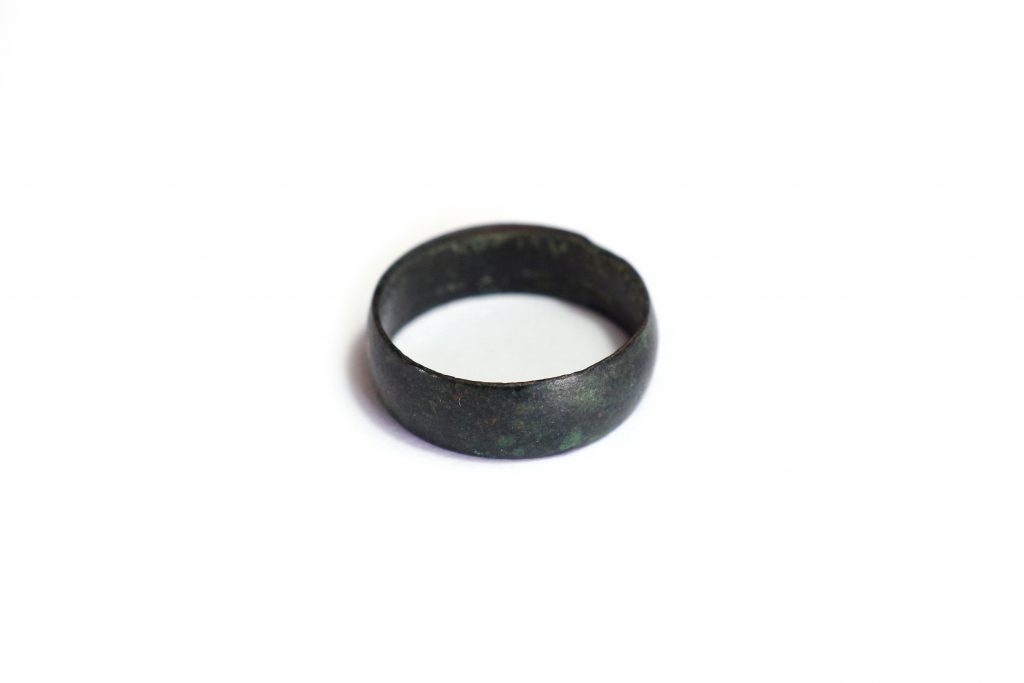
The appearance of the ring dates back thousands of years, specifically to the advent of metalworking techniques. In antiquity, metalworking was mastered in Egypt, Mesopotamia, and throughout the eastern Mediterranean. During this period, gold was the primary ornamental material for ancient rings, except for signet rings. Over time, precious stones, hard and ornamental stones, glass, and enamel began to adorn both men’s and women’s rings.
Among these men’s rings, three types of ancient rings can be found: the signet ring, the ornamental ring, and wedding rings.
Antique men’s ring
There are several types of rings for men, which are categorized, but some intersect: the antique signet ring or seal ring, the antique cameo ring, the religious ring, the solitaire ring, the engagement ring, etc.
Antique signet ring or seal ring
Among men’s rings, the signet ring is the one most commonly found throughout history. This type of men’s ring often takes the form of an intaglio.
The intaglio ring is a jewel with a surface that is engraved in relief. This can be the metal itself engraved directly or a precious stone. In the Middle Ages, these ancient rings served as seals to authenticate handwritten letters and other documents.
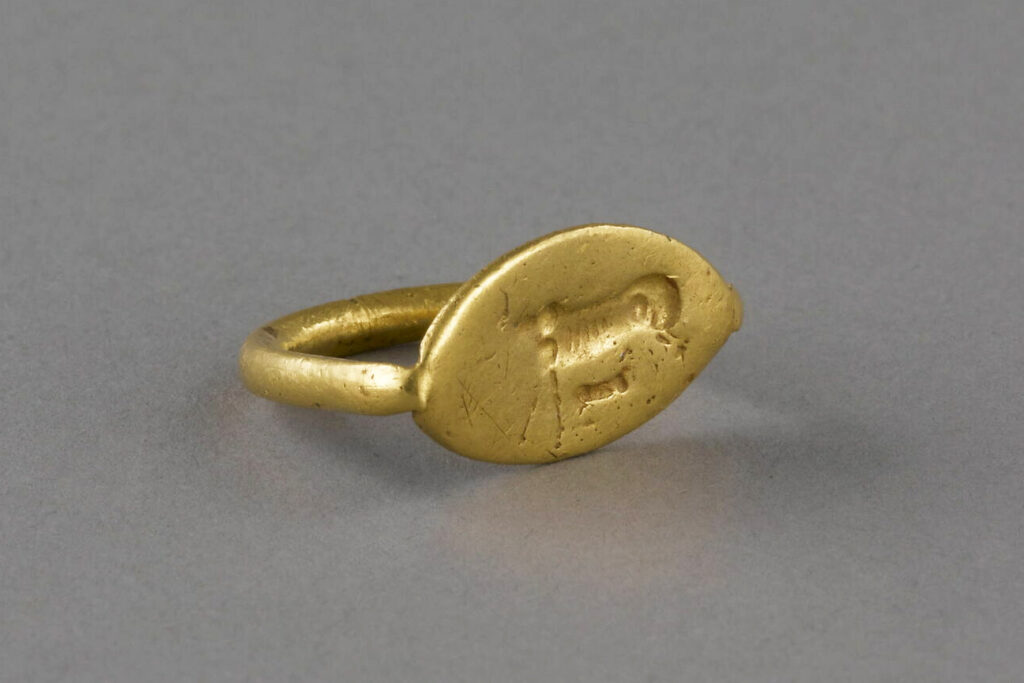
Louvre Museum, Department of Near Eastern Antiquities, AO 5774 – https://collections.louvre.fr/ark:/53355/cl010166422 – https://collections.louvre.fr/CGU
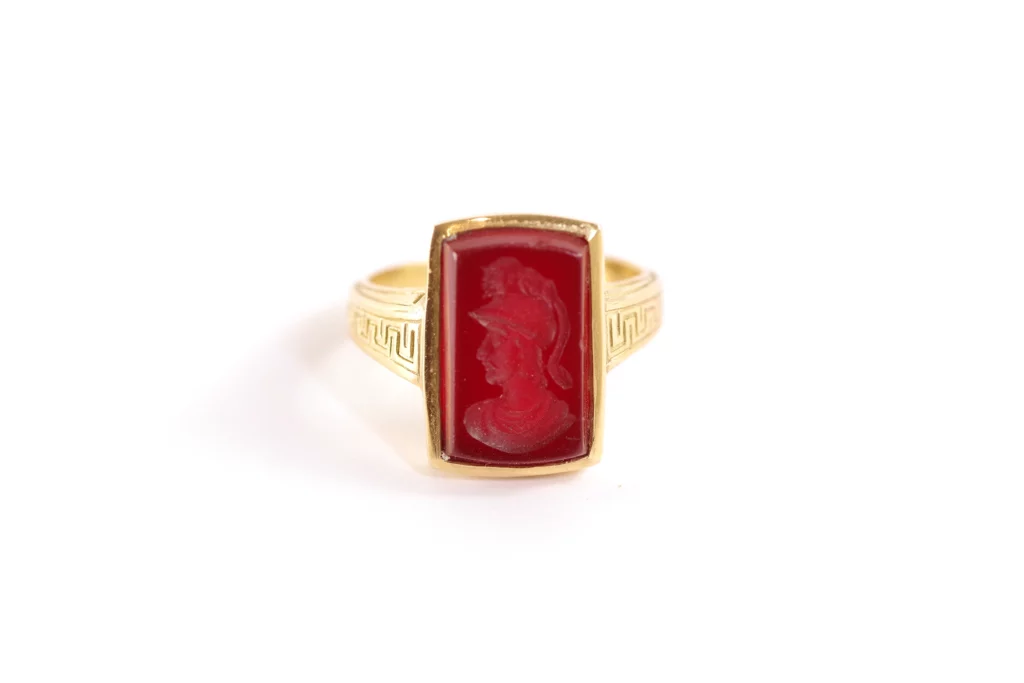
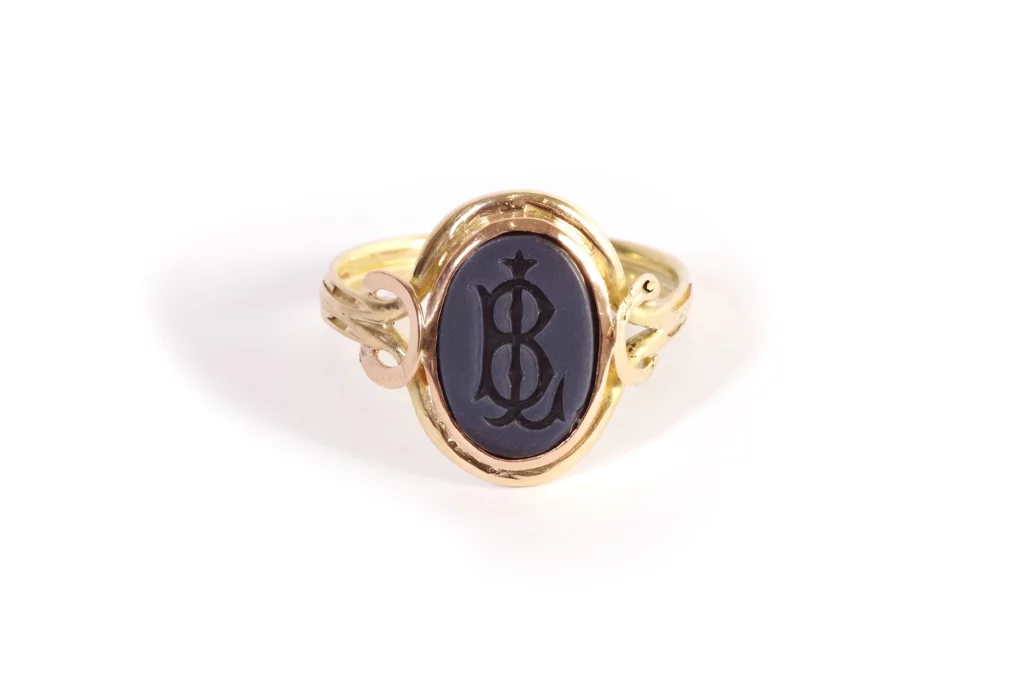
The fashion of the armored signet ring began in the 15th and 16th centuries, and this piece of jewelry has continued to be the most common type of signet ring worn by men.
Signet ring
The men’s signet ring embodies a tradition rich in symbolism and prestige.
In the Middle Ages, the men’s signet ring became a symbol of nobility and belonging to a lineage. Adorned with coats of arms, a heraldic emblem, or a cipher (or monogram), it allowed its wearer to be identified on the battlefield and during knightly jousts. It was passed down from generation to generation, carrying with it the heritage and values of the family.
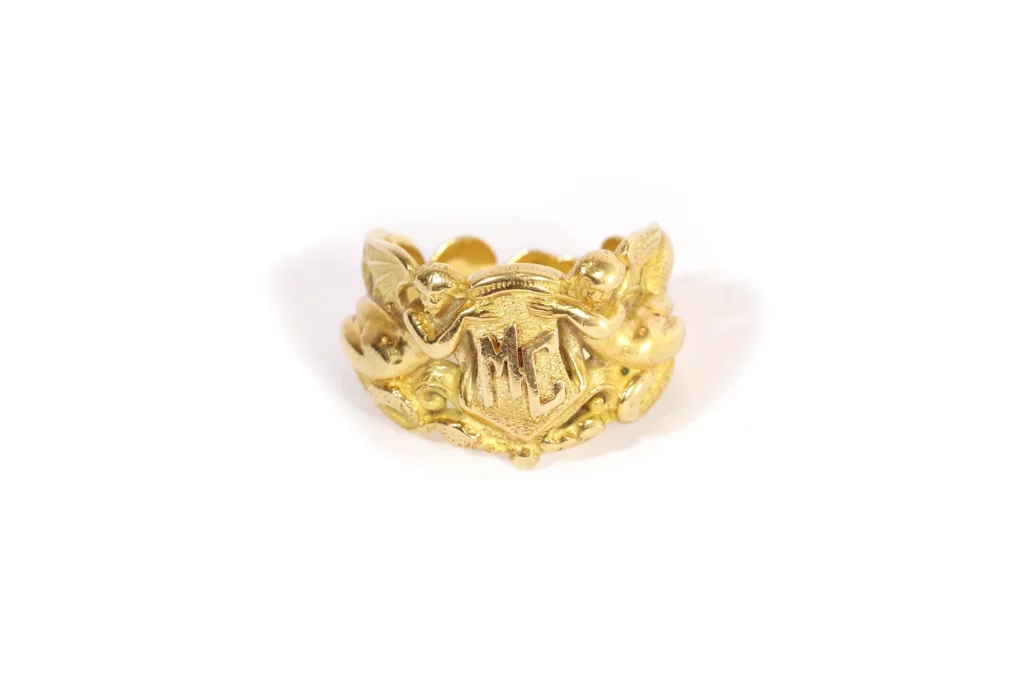
Men’s ring monogram MC, 18k gold, or 18k, Maison Mohs
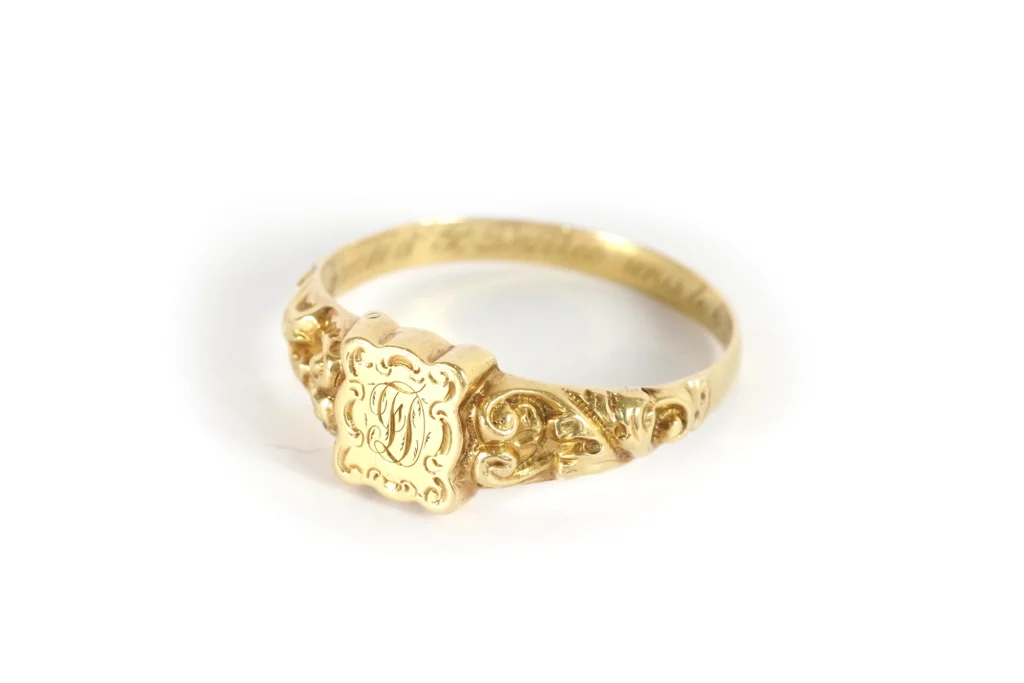
, gold 18k, Maison Mohs

During the Renaissance, the signet ring experienced a revival, becoming a sought-after fashion accessory among cultured and refined men. Adorned with precious stones and intricate designs, it then expressed a taste for aesthetics and luxury.
Over the centuries, the men’s signet ring has traversed epochs and cultures, retaining its profound significance as a symbol of identity, belonging, and power. Even today, men wear the signet ring bearing their initials, a Masonic symbol, a blood jasper carved into a coat of arms, or even forming a poison locket ring.
Adorned ring
The ornamental ring is a ring adorned with one or more precious stones. The setting is often very simple. The precious stones commonly used are diamonds, sapphires, emeralds, and rubies. However, other stones such as agate, shell, or jasper are also used for the making of cameo rings (blood jasper, red jasper, etc.)
Antique Cameo ring
The cameo ring is a ring with the surface of the stone treated in relief. The carving work is done in a hard stone such as agate, coral, jasper, or shell.
Ancient cameo rings are precious and delicate pieces of art that date back to antiquity but experienced renewed popularity during the Renaissance and the Victorian era.
A cameo ring can feature various motifs and subjects, ranging from portraits of military figures, emperors, or mythological gods to floral or abstract patterns.
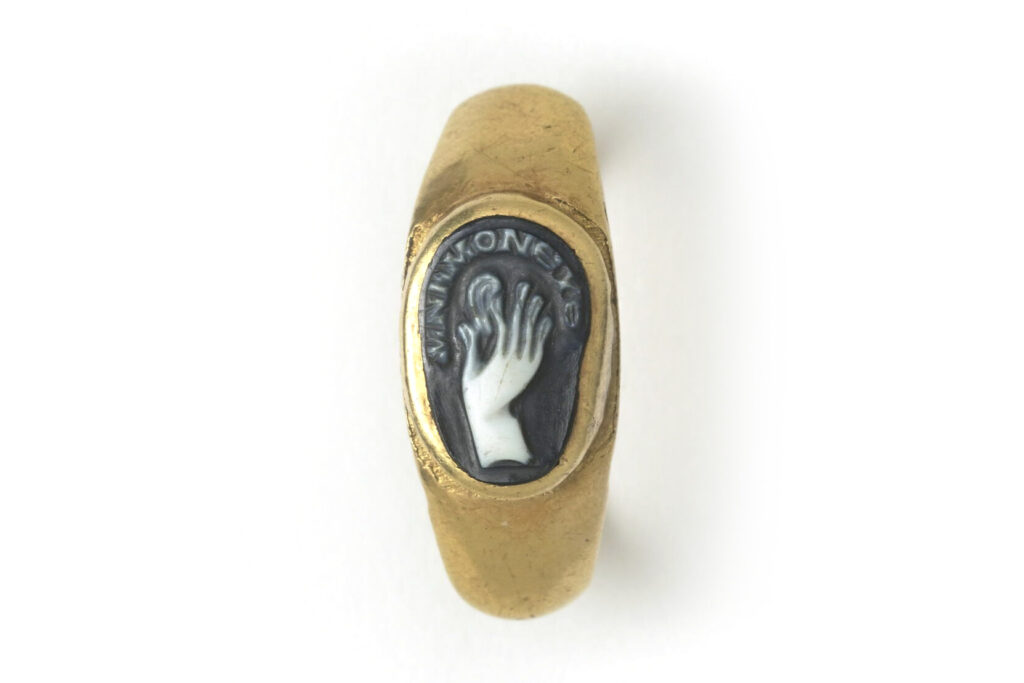
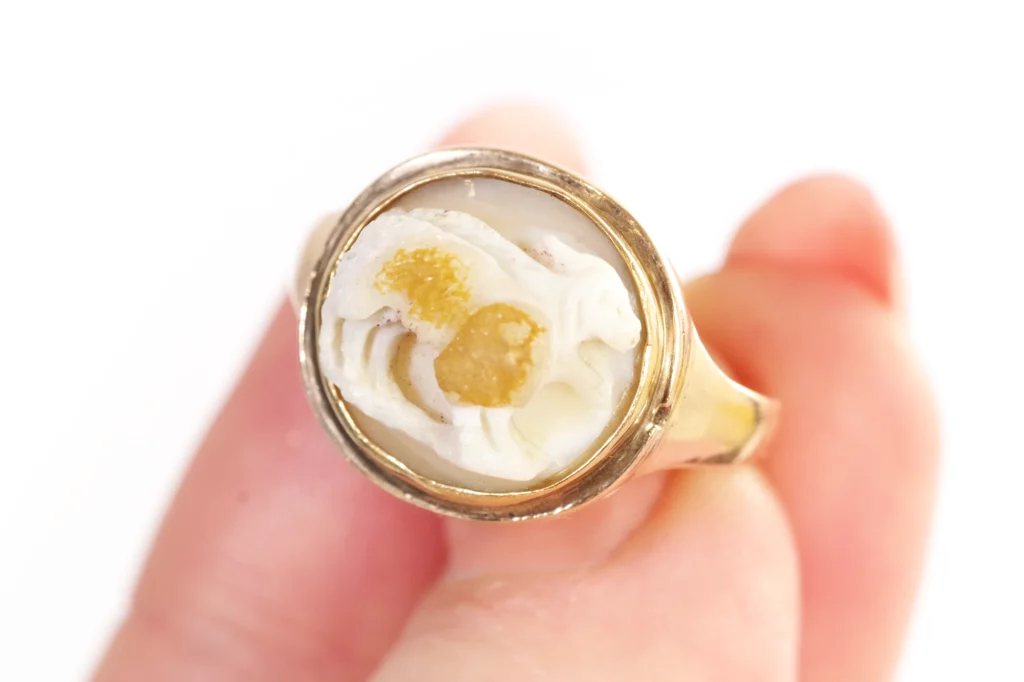
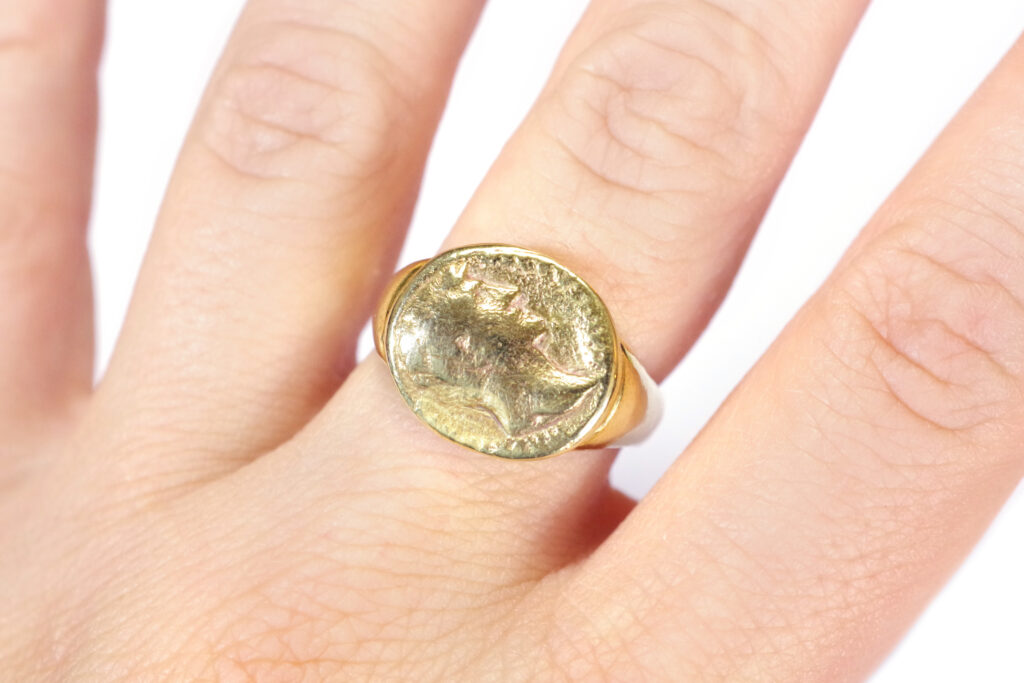
Among ornamental rings, the signet ring with an intaglio and the cameo ring are typically jewelry worn by men.
Bishop’s ring ou Episcopal ring
The ornamental men’s ring can be set with one or more precious stones. This is the case with pontifical rings or bishop’s rings. Always made of pure gold, this men’s ring was set with a sapphire or another precious stone, often adorned with the coat of arms of the owner’s family.

Note that these rings have a significant finger size because, in addition to being worn by men, they were worn over gloves.
Antique men’s ring set with a precious stone
Men also adorned themselves with rings simply set with one or more precious stones. Most often, these stones include a sapphire, a ruby, an emerald, or a diamond.

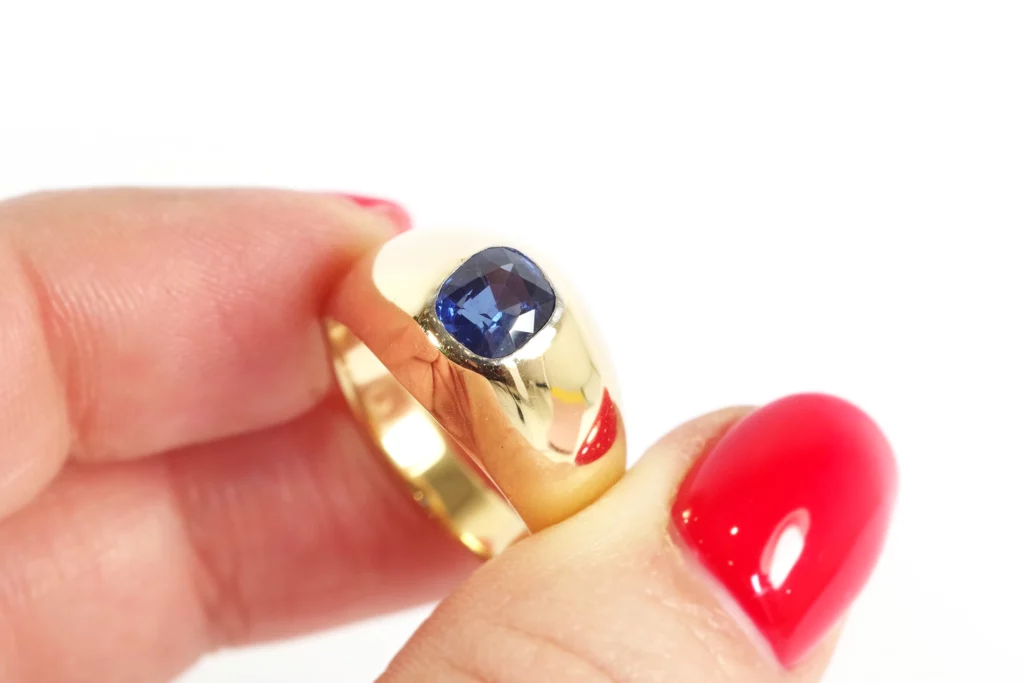
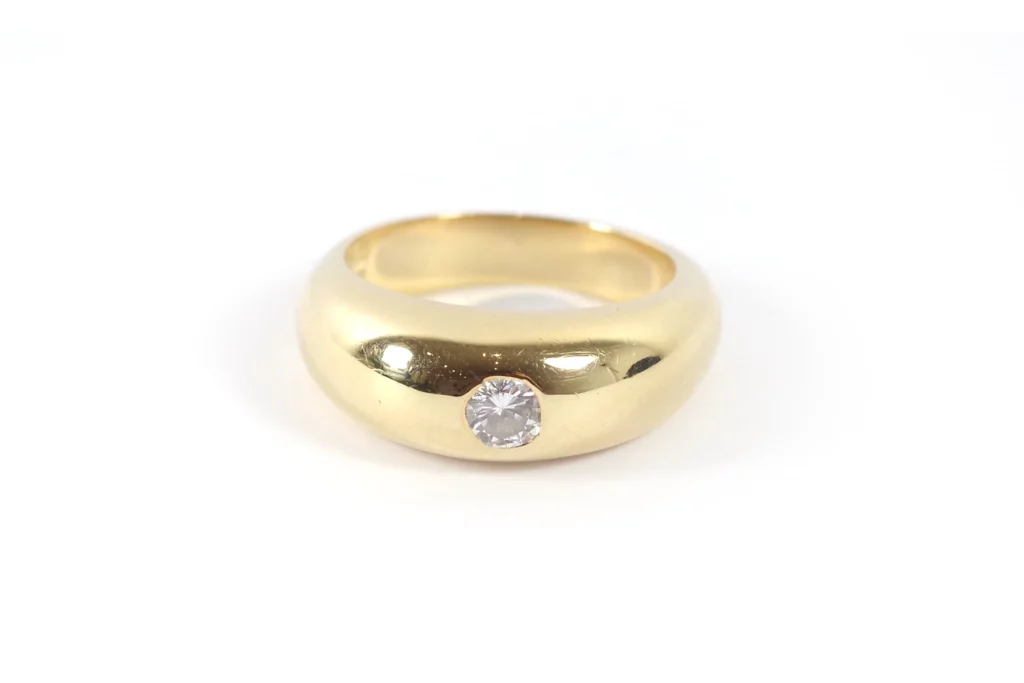
Wedding rings for men
The rings most associated with an engagement or wedding function are the rings exchanged to commit to each other, and this is reflected in the design of the jewelry. These rings are for both men and women, with mixed jewelry such as the paired alliance, interlocking rings, or fede rings (rings for both men and women).
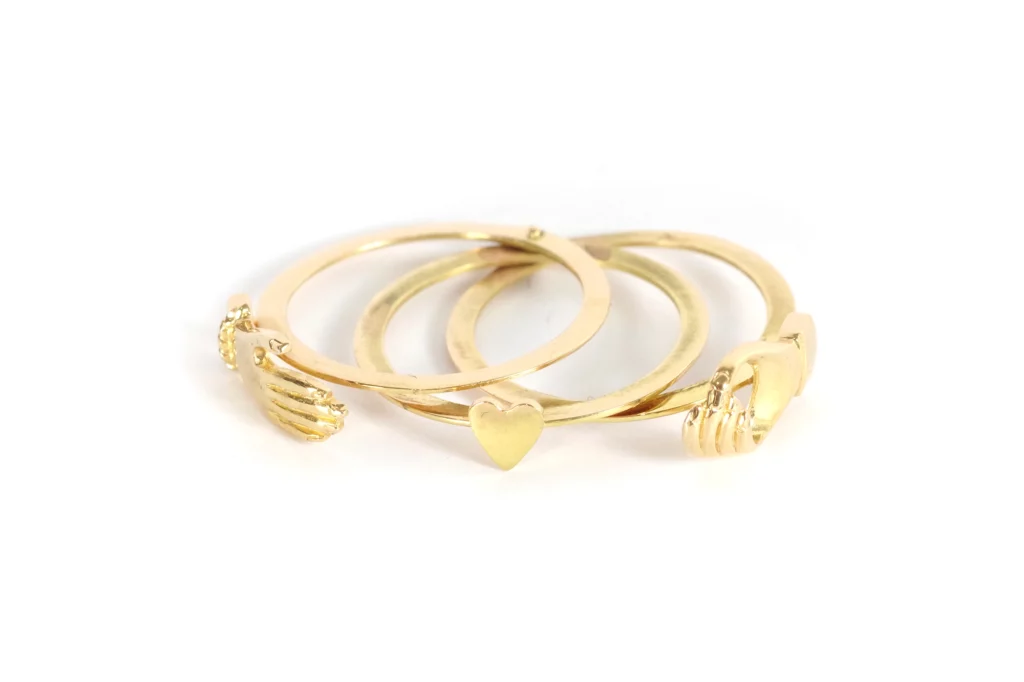

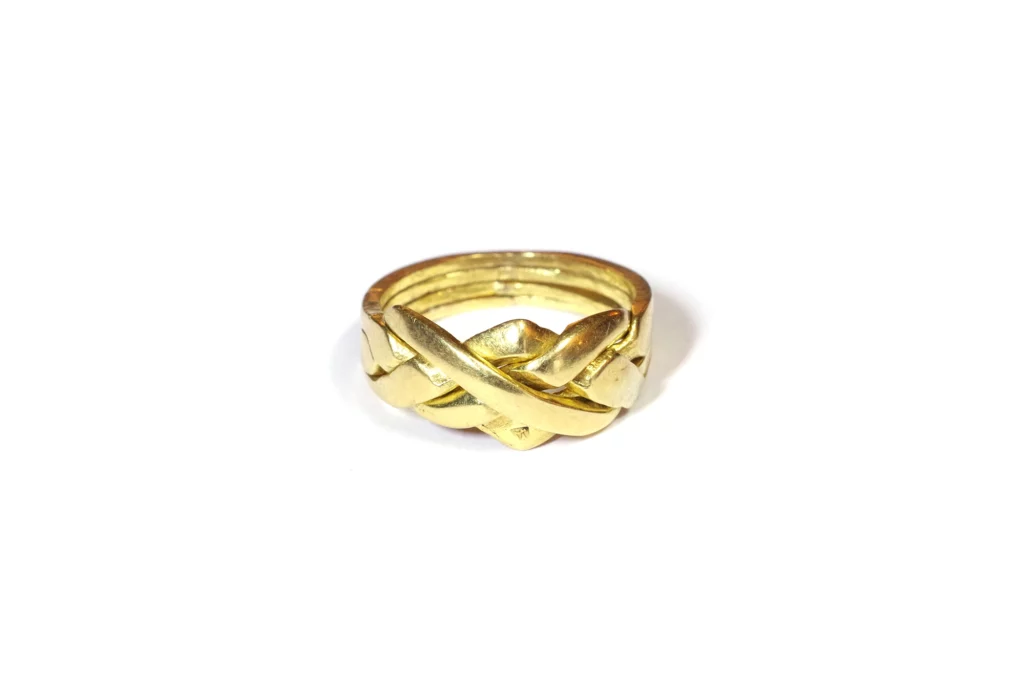
These rings reflect the symbol of the steadfastness of marriage and love.
Men’s ring, unisex ring, or gender fluid ring
Today, there’s no need to look for the label “men’s ring” to find a ring that you like. Indeed, rings are often thought to be inherently for women, but that’s a misconception. In ancient jewelry, both men and women wore rings almost equally. The only difference lies in the simplicity of the design and decoration of the ancient ring.

However, since the current offer of jewelry for men is smaller, we understand that men tend to search for their jewelry by category. That’s why we present a category “Men’s Ancient Rings” and “Signet Rings”; the latter can meet the demand for masculine jewelry. Finally, to ensure that the love for a men’s ring is absolute, feel free to ask us for a finger resizing by writing to us through the contact form.
See our jewelry category “Antique Men’s Rings.“
See our jewelry category “Signet Rings.“
